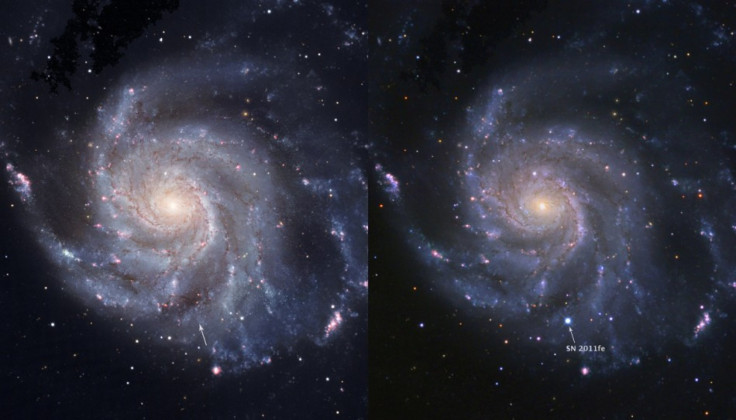Origins of Dying Star Helps Explain Nobel Prize Winning Theory
Supernova Was a Star not Dissimilar to Our Sun

An exploding star discovered just hours after it exploded has provided key information for understanding how the universe expands and what kinds of stars create certain types of supernovae. Published in the Dec. 15 issue of the journal Nature, two new studies have used data from the Hubble telescope to pin down what kind of star could have caused the August, 11 2011 supernova seen in the nearby Pinwheel Galaxy. Additionally, knowing what kind of star produces the so called Type Ia supernovae helps astronomers understand the forces that contribute to the expansion of the universe.
Type 1a supernovae help propel the universe in its ever increasing expansion and are key to understanding dark energy, the mysterious force that also seems to influence the expansion of the universe. Forces related to dark energy were included as part of the work produced by UC Berkeley researcher Saul Perlmutter who won the Nobel Prize for physics in 2011.
"The discovery of the accelerating expansion of the universe has revolutionized physics, and the repulsive dark energy may provide key clues to the long-sought quantum theory of gravity," Alex Filippenko, a UC Berkeley astronomer who was a member of both of the teams that made the Nobel Prize-winning discovery said in a statement.
"But the actual origins of Type Ia supernovae have remained mysterious, and various aspects of the explosion are not well understood."
Supernova SN 2011fe, as it's now known, was the nearest supernova detected in the last 25 years. It was seen just 11 hours after it exploded, and right away, UC Berkeley research astronomer Weidong Li began looking for a nearby star that may have helped fuel the dying star before it collapsed. While the star that explodes to produce a Type Ia supernova is thought to be a white dwarf made primarily of carbon and oxygen, it is believed the white dwarf explodes because it pulls matter from a companion star that to date has been a mystery.
Type Ia supernovae are bright and visible across huge cosmic distances, which allowed Perlmutter, his Nobel laureate colleagues and their teams to employ them as "standard candles" to measure the universe. In 1998, these studies revealed that the expansion of the universe is accelerating, now widely believed to require the presence of a mysterious dark energy.
© Copyright IBTimes 2025. All rights reserved.





















